Unique Logistics Solutions to Complex Container Drayage Issues
Today, more than 80% of global shipping involves containers. They're packed with everything from personal storage items in dry containers to heavy machinery on flat rack containers. For business owners shipping products, getting a container from point A to point B requires precise planning and high-level tracking. But that's easier said than done when global supply chains become over-congested, leading to loading time issues and delays.
That's bad news for business owners who are already under a massive amount of stress. The truth is that container storage delays can cripple a business, but there's a viable solution: drayage brokers in Washington, DC like RelyEx. Drayage companies provide unique solutions to minimize demurrage and help ensure the successful delivery of your freight.
With more than 30 combined years of experience and a solutions-oriented team, RelyEx has quickly become the first choice for streamlined, efficient drayage services. To understand the true value of RelyEx's offerings in the global logistics industry, it helps to understand first what drayage is and why it's used.
What is Drayage and Why Is It Important?
If you're a seasoned business owner who uses port drayage to transport your products, you know exactly how important the service can be. But if you were to poll a group of random people, you may get five different definitions of the term "drayage." That begs the question, how is one of the most crucial steps in the supply chain and most vital components of global trade such a confusing concept? When you break it down, it's not too difficult to grasp.
Drayage, by definition, means the transportation of freight from an ocean port to another destination. Today, drayage is also used to describe the process of transporting products and goods over short distances or over "the first mile."
While drayage often means short-distance movements during the supply chain process, it's primarily used in the container shipping space. Drayage loads usually have arrival and departure points in the same city and don't include long-haul, national transportation.
Let us know how we can help.
drayage broker Services
Service Areas
Because a drayage load can mean a few different things, confusion among carriers is common. Many carriers link drayage with going into a port, but that isn't always true. While all drayage loads typically originate from a port of entry, there are often several legs of a drayage journey before a container turns up at its final stop. Legs of a drayage load may include:
Why Are Drayage Companies in Washington, DC So Important?
You may be thinking, what's so important about drayage? It's such a small step in the container storage transport process. In reality, it's an integral piece needed in the logistics industry and a crucial part of U.S. supply chain management.
To truly understand the importance of drayage, let's use flowers as an example. Most cut flower shipments enter the market from areas in South America until they end up at Dutch auction houses. Once there, wholesalers purchase flowers in bulk and send those products to retail outlets worldwide. Because flowers are perishable, they typically need to be refrigerated and are often shipped in reefer containers. These refrigerated vessels must maintain a certain temp to prevent loss.
Drayage companies like RelyEx allow flower shippers to send their products from Argentinian ports to airports in the Netherlands with peace of mind because their products are protected. The only way to accomplish this feat is with the help of swift, meticulous port drayage services. Drayage companies allow flower shippers to send their products from Argentinian ports to airports in the Netherlands with peace of mind, because their products are protected. The only way to accomplish this feat is with the help of swift, meticulous port drayage services.
If port drayage is compromised, it can cause delays and even fines. You know the packages you get delivered to your front door from apps like Amazon? Without drayage and drayage brokers, one or two-day shipping times wouldn't even be possible.
As a multi-billion-dollar industry in the U.S. alone, it seems like drayage shipping issues shouldn't exist. But the fact is inefficiencies and congestion are still major problems at ports. Whether it's a lack of carriers, absent chassis, or overburdened terminals, delays lead to missed deadlines, lost revenue, and worse.
But anytime challenges exist, so too do innovative solutions.
QUOTE REQUEST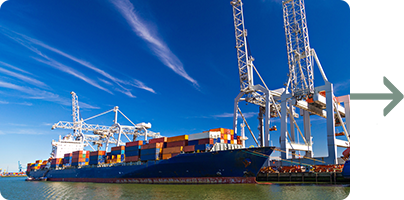
Port
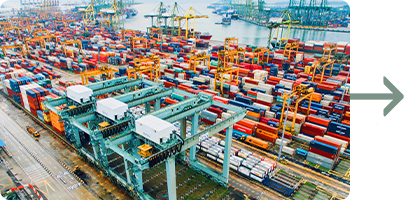
Yard

Warehouse
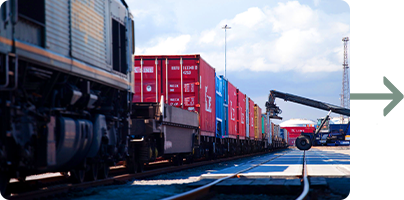
Rail

The RelyEx Difference
RelyEx was created because our founders saw a need in the logistics space for more reliability and efficiency. The reality of the shipping and logistics industry is that it has become very transactional. It's an odd evolution, because most businesses seek a third-party logistics partner that is accessible, transparent, and committed to providing solutions.
As the logistics space continues to grow, it creates newfound expenses and complexities. Clients like ours know that and need a supply chain partner who is genuinely interested in their business. By understanding the needs of our customers and carriers, we can provide the most reliable, effective drayage services possible.
Unlike some drayage companies in Washington, DC, we begin managing your containers before they ever hit the ports by mapping out the most efficient pathways of delivery. That way, our team can discover the best drayage pathways to expedite delivery time and reduce fees that cut into profits.
Our valued drayage customers choose RelyEx because:
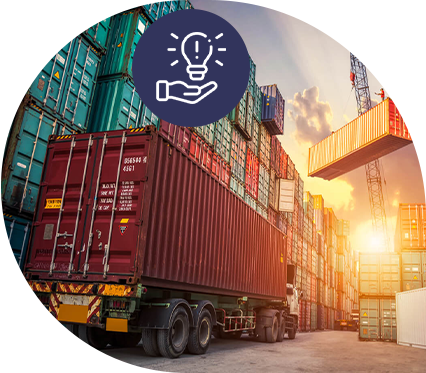
RelyEx Solves Problems
At RelyEx, we like to consider ourselves problem solvers. The nature of the container drayage industry presents new challenges every day, but we're firm believers that there's a solution to every hurdle we encounter. And while some drayage businesses implement a reactive approach, RelyEx customers choose us for our proactive mindset. We take pride in solving your company's drayage challenges to help you avoid frustrating fees, missed expectations, and delayed shipments. We strive to make every transaction successful and streamlined by partnering with shippers who prioritize transparent, prompt, and accurate communication.

RelyEx Has a Unique Vantage Point
RelyEx approaches your business from the customer's perspective - a unique approach that helps us provide high-quality, effective drayage services. We've been in the customers' shoes, know their pain points, and because of that, provide first-hand solutions to stressful supply chain issues. With over 30 years of collective knowledge, our team excels in:
- Inventory Management
- Logistics
- Purchasing
- Finance
Our varied, high-level drayage shipping experience helps us achieve our overarching goal: expertly managing your freight movement needs. That way, you can direct your time and focus on growing the core aspects of your business while we handle the heavy lifting. Throw in proactive planning to avoid bottleneck situations and strong communication for transparent customer relations, and you can see why so many companies trust RelyEx.

RelyEx Nurtures Strong Carrier Relationships
When it comes to shipping logistics, it only takes one mistake by a mediocre worker to disrupt your business. That's why, at RelyEx, we pride ourselves on forming and nurturing relationships with carriers who match our standards of care. Our founding partner started his career transporting freight for companies as an on-demand carrier. He uses that knowledge to maximize the resources of our carriers so that our customer's expectations aren't just met - they're exceeded.
Why Choose RelyEx as Your
Drayage Company in Washington, DC?
Based in the port city of Washington, RelyEx has a keen understanding of the challenges of managing the inbound and outbound flow of containers. Our team of container drayage experts provides your business with unique solutions to nuanced shipping problems, minimizing demurrage and ensuring the successful delivery of your freight.
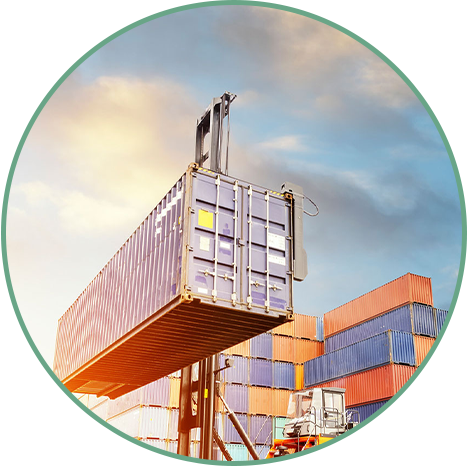
Customers choose RelyEx because:
- We are a reliable drayage logistics partner that manages your freight from beginning to end
- We have a rare industry vantage point with 30+ years of client-side experience
- We foster and fortify the strongest vendor relations
- We take a proactive approach to problem-solving, not a reactive approach
Let us know how we can help.
 843-885-3082
843-885-3082

Your Drayage Shipments Managed from Start to Finish
Some drayage brokers don't care how customers feel about their service as long as they sign a contract and get paid. As a solutions-oriented team, RelyEx takes the opposite approach. We're motivated by the opportunity to overachieve for our customers and to provide them with the best logistics experience possible. With professional experience as carriers and shippers ourselves, we know the roadblocks and challenges you're facing. We excel at mapping out the best plans of action to solve those problems. But that's just the start.
Our tracking experts monitor and manage every aspect of your drayage shipment from booking to delivery, 24/7. Once booked, we look for the availability of your containers hourly once they're at port. When they arrive, our team acts quickly to access your storage containers when they're available.
Plus, RelyEx ensures your company's requirements are met by the carrier during loading and delivery and provide necessary documentation as fast as possible. With real-time tracking updates and access to our customer service professionals, your team has complete visibility throughout the shipping process.
We Source Top-Notch Operators at the Best Prices
Over the years, RelyEx has built a strong network of drayage carriers, transloading locations, and container storage spaces to provide you with the best possible options to match your drayage service needs. We know that searching for quality service presents an added layer of complexity and stress to our customers. That's why we work hard to take that off your plate by connecting you with our reliable shipping partners.
With a background moving freight as an on-demand carrier, our founding partner understands how to maximize the resources and equipment of our carriers to match your needs.


We Make Transparent, Timely Communication a Priority
Like other industries, the global logistics space is complex. Mistakes will be made, and problems will happen. With those truths in mind, RelyEx has built its reputation as problem solvers. Unlike other drayage companies, we don't shy away from this industry's complexities because we take pride in solving problems. Even better, we aim to do what's needed to avoid those problems altogether.
As your logistics partner, we will provide your company with accurate, transparent, and prompt communication. If there are unexpected issues, we'll notify you immediately and will provide several options to remedy the problem. We even offer custom reporting for large clients who need at-the-moment updates and quick access to shipment documentation.
We Have Robust Project Management Experience
Why let the unpredictability of your industry dictate your success? With a background working in manufacturing, our founders are familiar with the demands of managing production schedules and sales orders. That experience makes it abundantly clear to us that every business and industry is different. If you struggle with seasonal surges or other factors, our team supports your business with a mapped-out plan and schedule, so you stay ahead of the game.
QUOTE REQUEST
How to Avoid
Demurrage Fees for Your Business
Based in the port city of Washington, RelyEx has a keen understanding of the challenges of managing the inbound and outbound flow of containers. Our team of container drayage experts provides your business with unique solutions to nuanced shipping problems, minimizing demurrage and ensuring the successful delivery of your freight.
What is shipping demurrage?
Demurrage is a charge issued by a port, carrier, or railroad company for storing containers that do not load and unload their cargo promptly. Once the daily limit of free time is exceeded, shippers are charged daily demurrage fees until their cargo is shipped. Though different ports have different policies, charges can range from $75 to $150 per container, per day, for a set number of days. Additional demurrage fees are incurred if a shipper exceeds the port's parameters.

What causes demurrage charges?
Even when shippers maintain a tight schedule for unloading freight, external factors can play an uncontrollable part. Typically, shipping mistakes caused by human error trigger the most demurrage charges. Some of the most common causes of demurrage include:
- Paperwork Errors
- Payment Delays
- Documents Received Too Late

Paperwork Errors
Typically, shippers need four specific documents to clear shipments through customs: A Bill of Lading (or BOL), a commercial invoice, a packing list, and an arrival notice. Seasoned drayage brokers like RelyEx are used to preparing these documents, but new shippers tend to miss this step due to inexperience.
Payment Delays
If a shipper only pays for part of their shipment, a vessel operator may refuse to release their freight until their bill is fully paid. Payment delays lead to cargo detention at the port of entry, which triggers demurrage charges.
QUOTE REQUESTDocuments Received Too Late
Paperwork is needed when you're shipping goods with a drayage company. When documents like the Certificate of Origin or Bill of Lading arrive at their destination late, you can expect demurrage fees. RelyEx avoids this situation entirely by being proactive when submitting paperwork.
Additional causes for demurrage fees can include:
- Damaged Container Storage
- Custom Released Containers
- Storage Containers Are Too Heavy
Free Consultation
RelyEx:
The Supply Chain Partner You Can Count On
At RelyEx, we know first-hand how stressful supply chain problems can be for business owners. Though drayage shipping might seem minor on the surface, it affects every stage of your shipping process. And when inevitable hurdles manifest, RelyEx propels you over the proverbial roadblocks with a proactive mindset and a passion for challenging projects. We believe that all problems have a solution, and our unique vantage point allows us to provide first-hand solutions to customers in a wide array of industries.
When it comes to your business, don't settle for anything less than RelyEx. Contact our office today to learn more about how we make your shipping experience streamlined and stress-free.
 843-885-3082
843-885-3082
Latest News in Washington, DC
Michigan veterans will take Honor Flight to Washington, DC
Taylor Morrishttps://www.woodtv.com/news/michigan/michigan-veterans-will-take-honor-flight-to-washington-dc/
GRAND RAPIDS, Mich. (WOOD) — On Saturday, more than two dozen Michigan veterans will be headed out east for a once-in-a-lifetime opportunity.Every year, Talons Out Honor Flight gives those who served an opportunity to fly to Washington, D.C., to visit the memorials dedicated to them.Alvin Peterson and Richard Krosschell have two different stories but many similarities. Both served in the Vietnam War during their early 20s, both worked for Grand Rapids Public Schools once they returned and both have never been to Washingto...
GRAND RAPIDS, Mich. (WOOD) — On Saturday, more than two dozen Michigan veterans will be headed out east for a once-in-a-lifetime opportunity.
Every year, Talons Out Honor Flight gives those who served an opportunity to fly to Washington, D.C., to visit the memorials dedicated to them.
Alvin Peterson and Richard Krosschell have two different stories but many similarities. Both served in the Vietnam War during their early 20s, both worked for Grand Rapids Public Schools once they returned and both have never been to Washington D.C.
However, come this Saturday, that will change.
“I am taking my daughter,” Peterson said.
“Our oldest son, from Indianapolis, is going to drive up tomorrow afternoon for the dinner Friday evening and go with me,” Krosschell said.
Both men will be riding along on the flight from Kalamazoo to Washington, D.C. The Honor Flight Network is a national program and includes independent hubs throughout the country, working together to accomplish the same mission: recognizing those who have served.
Krosschell and Peterson both say they are looking forward to Saturday’s trip. During a conversation with News 8, they explained how during the war, and for a long time after, it wasn’t uncommon for people back home to not show veterans support for their service.
“There was no really appreciation shown for veterans getting out,” Krosschell said. “Nothing of the sort. Here’s your discharge papers. You’re on your own. … The opportunity for this Honor Flight, 50 years later, is very much appreciated.”
“Like me, they got off the plane, or you got off the bus, maybe there was somebody there to see you got off the plane, maybe you got off the plane and nobody was there. You just went home,” Peterson said.
On Saturday, a total of 26 veterans will be on board — many of whom are from West Michigan, including Peterson and Krosschell.
“To see the war memorials, the Korean War, the World War II Memorial, the Lincoln Memorial. That’s what I am looking forward to,” Krosschell said.
“You get to meet all these people from all these different services, and, I guess, it’s nice to just go see what they fought for,” Peterson said.
Noticing a lot of new birds around? Chief Meteorologist Ellen Bacca has the details on how many millions of birds migrated the night of April 30th.
TODAYClouds with mostly showers & an isolated t-storm this morningPartial clearing this afternoon8AM: 60NOON: 68HIGH: 72WIND: N-NW 5-15 mph
SUNRISE 6:33 a.m.SUNSET 8:46 p.m.
TODAY Mostly cloudy to completely cloudy with scattered showers and thunderstorms expected primarily during the morning hours. Total rainfall amounts will range from 0.25-0.50″. Late day clearing. A high in the lower 70s.
TONIGHT Partly to mostly clear tonight with a low in the 50s.
SATURDAY Sky conditions Saturday will range from mostly sunny to mostly cloudy at times with more clouds southeast of Grand Rapids. Highs will peak in the mid 70s.
SUNDAY There will be a chance of showers Saturday night into Sunday morning showers before sunshine settles in. Highs reach the low 70s.
LONG RANGE Above average high temperatures are expected through the week with an active, wet pattern developing after Monday.
Find information on downloading the Storm Team 8 weather app here.
Sudden summer: D.C. could see its first 90-degree day this year Monday
Ian Livingstonhttps://www.washingtonpost.com/weather/2024/04/26/washington-dc-first-90-degrees/
Here’s a summary of model projections for high temperatures on Monday and Tuesday:This time of year, when the air is still relatively dry, daytime temperatures sometimes end up higher than projected, particularly if clouds are few and winds come in from the west.Washington’s normal first 90-degree day is around May 16; it’s around May 14 in Baltimore and May 19 at Dulles International Airport.On days when the urban centers just nick 90 degrees, surrounding suburbs often aren’t quite as hot, with h...
Here’s a summary of model projections for high temperatures on Monday and Tuesday:
This time of year, when the air is still relatively dry, daytime temperatures sometimes end up higher than projected, particularly if clouds are few and winds come in from the west.
Washington’s normal first 90-degree day is around May 16; it’s around May 14 in Baltimore and May 19 at Dulles International Airport.
On days when the urban centers just nick 90 degrees, surrounding suburbs often aren’t quite as hot, with highs typically in the mid- to upper 80s.
Washington’s earliest 90-degree day on record occurred on March 22, 1907. More recently, it hit 90 as early as April 6, 2010, setting the stage for a record-tying 67 days at or above 90 that summer.
D.C.’s latest first instance of 90 degrees waited until July 12 in 1979.
Last year’s first 90 held off until June 2, which was about two weeks later than normal.
The hot weather early next could challenge records. Monday’s record high in Washington is 91 (from 2017) and 92 on Tuesday (from 1942).
Record-breaking heat at Dulles Airport is more probable because the numbers to beat are lower (records at Dulles only date to 1963 compared to the 1870s in Washington). Monday’s existing record high is 89 (from 2017), and Tuesday’s is 86 (from 2017).
Record-warm lows are possible on Tuesday as it’s not forecast to get any cooler than the low- to mid-60s in the morning. The warmest lows on record for the date are 67 in Washington, 66 at Dulles and 63 in Baltimore.
After flirting with 90 degrees on Monday and Tuesday, warmer than normal weather is favored to persist through the workweek and perhaps into the weekend before temperatures return closer to normal.
But odds are any cool-down won’t last long. This is the fourth-warmest year on record to date and a hotter than typical summer is anticipated.
The trend toward higher temperatures in Washington — the city has warmed about 5 degrees since the late 1870s — is the result of human-caused climate change. Both the burning of fossil fuels and urbanization are driving temperatures higher.
Jason Samenow contributed to this report.
Sudden summer: D.C. could see its first 90-degree day this year Monday
Ian Livingstonhttps://www.washingtonpost.com/weather/2024/04/26/washington-dc-first-90-degrees/
Chillier than normal weather ruled the Washington region for most of the last week — with highs mostly in the 60s. But mother nature’s heater is about to turn on full blast.The District could see high temperatures of 90 degrees Monday and Tuesday as the first surge of summer heat swells over the region. Temperatures this high would be 15 to 20 degrees above normal.To hit 90 for the first time in late April would be about two weeks earlier than normal but not all that surprising considering 2024 has been one of Washi...
Chillier than normal weather ruled the Washington region for most of the last week — with highs mostly in the 60s. But mother nature’s heater is about to turn on full blast.
The District could see high temperatures of 90 degrees Monday and Tuesday as the first surge of summer heat swells over the region. Temperatures this high would be 15 to 20 degrees above normal.
To hit 90 for the first time in late April would be about two weeks earlier than normal but not all that surprising considering 2024 has been one of Washington’s warmest years on record so far. Recall that it hit 80 degrees in January for the first time on record.
If the District reaches 90 on Monday, it will be the earliest first instance since 2017, when it first hit 90 on April 29.
With an early season heat dome developing over the eastern United States starting late this weekend, the area is poised to post a streak of five or six days with highs in the 80s or higher. This is fairly impressive for the time of year when average highs are still in the low 70s.
Monday appears to have the highest chance of reaching 90, but Tuesday could reach the mark as well. Some model simulations suggest additional chances to hit 90 late next week (around May 2 or 3).
Here’s a summary of model projections for high temperatures on Monday and Tuesday:
This time of year, when the air is still relatively dry, daytime temperatures sometimes end up higher than projected, particularly if clouds are few and winds come in from the west.
Washington’s normal first 90-degree day is around May 16; it’s around May 14 in Baltimore and May 19 at Dulles International Airport.
On days when the urban centers just nick 90 degrees, surrounding suburbs often aren’t quite as hot, with highs typically in the mid- to upper 80s.
Washington’s earliest 90-degree day on record occurred March 22, 1907. More recently, it hit 90 as early as April 6, 2010, setting the stage for a record-tying 67 days at or above 90 that summer.
D.C.’s latest first instance of 90 degrees waited until July 12 in 1979.
Last year’s first 90 held off until June 2, which was about two weeks later than normal.
The hot weather early next week could challenge records. Monday’s record high in Washington is 91 (from 2017) and 92 on Tuesday (from 1942).
Record-breaking heat at Dulles Airport is more probable because the numbers to beat are lower (records at Dulles only date to 1963 compared with the 1870s in Washington). Monday’s existing record high is 89 (from 2017), and Tuesday’s is 86 (from 2017).
Record-warm lows are possible Tuesday as it’s not forecast to get any cooler than the low-to-mid-60s in the morning. The warmest lows on record for the date are 67 in Washington, 66 at Dulles and 63 in Baltimore.
After flirting with 90 degrees on Monday and Tuesday, warmer-than-normal weather is favored to persist through the workweek and perhaps into the weekend before temperatures return closer to normal.
But odds are any cool-down won’t last long. This is the fourth-warmest year on record to date and a hotter-than-typical summer is anticipated.
The trend toward higher temperatures in Washington — the city has warmed about 5 degrees since the late 1870s — is the result of human-caused climate change. Both the burning of fossil fuels and urbanization are driving temperatures higher.
Jason Samenow contributed to this report.
Park Service OKs Demolition for DC’s RFK Stadium
David Holtzmanhttps://commercialobserver.com/2024/05/dc-feds-demolition-rfk-stadium/
The National Park Service cleared the way Thursday for Washington, D.C., to demolish Robert F. Kennedy Memorial Stadium, former home of the Washington Commanders football team.The federal agency said in a statement that its environmental assessment found that the demolition will have no significant impacts on the site or the surrounding area near East Capitol Street and the Anacostia River. While the park se...
The National Park Service cleared the way Thursday for Washington, D.C., to demolish Robert F. Kennedy Memorial Stadium, former home of the Washington Commanders football team.
The federal agency said in a statement that its environmental assessment found that the demolition will have no significant impacts on the site or the surrounding area near East Capitol Street and the Anacostia River. While the park service still has to issue a permit for the city to remove the stadium, the assessment’s findings were a critical milestone, according to a WTOP news report
SEE ALSO: The Met Raises $550M to Develop New Contemporary Art Wing
The park service signed the assessment on April 29, following a public review process that began in March 2022. The city owns the stadium, but it sits on land the park service administers.
The U.S. House of Representatives passed a bill in February allowing the city to redevelop the site, which could pave the way for a new stadium for the Commanders. The legislation is pending in the U.S. Senate.
The football team has been playing at Commanders Field, formerly FedEx Field, in Landover, Md., since it departed RFK in 2019. Commanders President Josh Harris told the Washington Business Journal recently that while the team was in talks with Maryland on a permanent home, it is open to returning to D.C. Virginia has also expressed interest in hosting the team.
“We’re excited that the process is moving forward and taking us one step closer to the District putting the land at RFK to a higher and better use that benefits our residents and communities,” Deputy Mayor for Planning and Economic Development Nina Albert said Thursday.
Other sports teams that played in RFK Stadium over the years, included the D.C. United soccer team and baseball’s Washington Nationals. The stadium, which opened in 1961, has not been used since the Commanders left and “has fallen into disrepair,” the park service said in the assessment. Events DC, which operates the facility, has removed hazardous materials, stadium seats and other fixtures, according to the park service’s statement.
The agency approved dismantling the stadium in stages rather than imploding it, given the risks of sound, dust and vibration impacts to nearby properties.
What's new and next at D.C. airports
Anna Spiegelhttps://www.axios.com/local/washington-dc/2024/05/01/dca-dulles-food-restaurants-shopping
D.C.'s airports are evolving with new ...
D.C.'s airports are evolving with new restaurants and shops, plus amenities to ease travel.
Why it matters: Flying isn't always fun, but Dulles International and Reagan National want to ramp up the airport experience with ambitious improvement projects.
The big picture: The Metropolitan Washington Airports Authority manages both airports and recently negotiated a 15-year contract that outlines $9 billion worth of innovations. If approved, it'll start in January.
Plans include:
Zoom in: A new concessions manager for both airports wants to bring in more "destination restaurants," according to the Washington Business Journal. That includes more local partnerships and big national names.
Food & Drink
What's new: A bunch of new dining options were announced for both airports. Among the openings, look for Half Moon Empanadas, an offshoot of local burger bar Lucky Buns (DCA), and a Rusty Taco and Cava (IAD).
Up next: Reagan National is getting a local Atlas Brew Works, Zeke's, and Compass coffee shops, an offshoot of D.C.'s upscale Mexican chain Mi Vida, and Maryland-based Nalley Fresh eats.
Shopping
Up next: At Reagan, look for local-leaning gifts at The NeighborGoods and DC Arts District Market. The airport is also getting a big-deal LEGO store as well as a branch of D.C.-based bookstore Solid State Books.
Beauty
What's new: Robot manicures! Speedy-spa brand Clockwork is now at DCA with $10 robotic manicures (just color, we don't trust AI with clippers yet).
Disclaimer:


